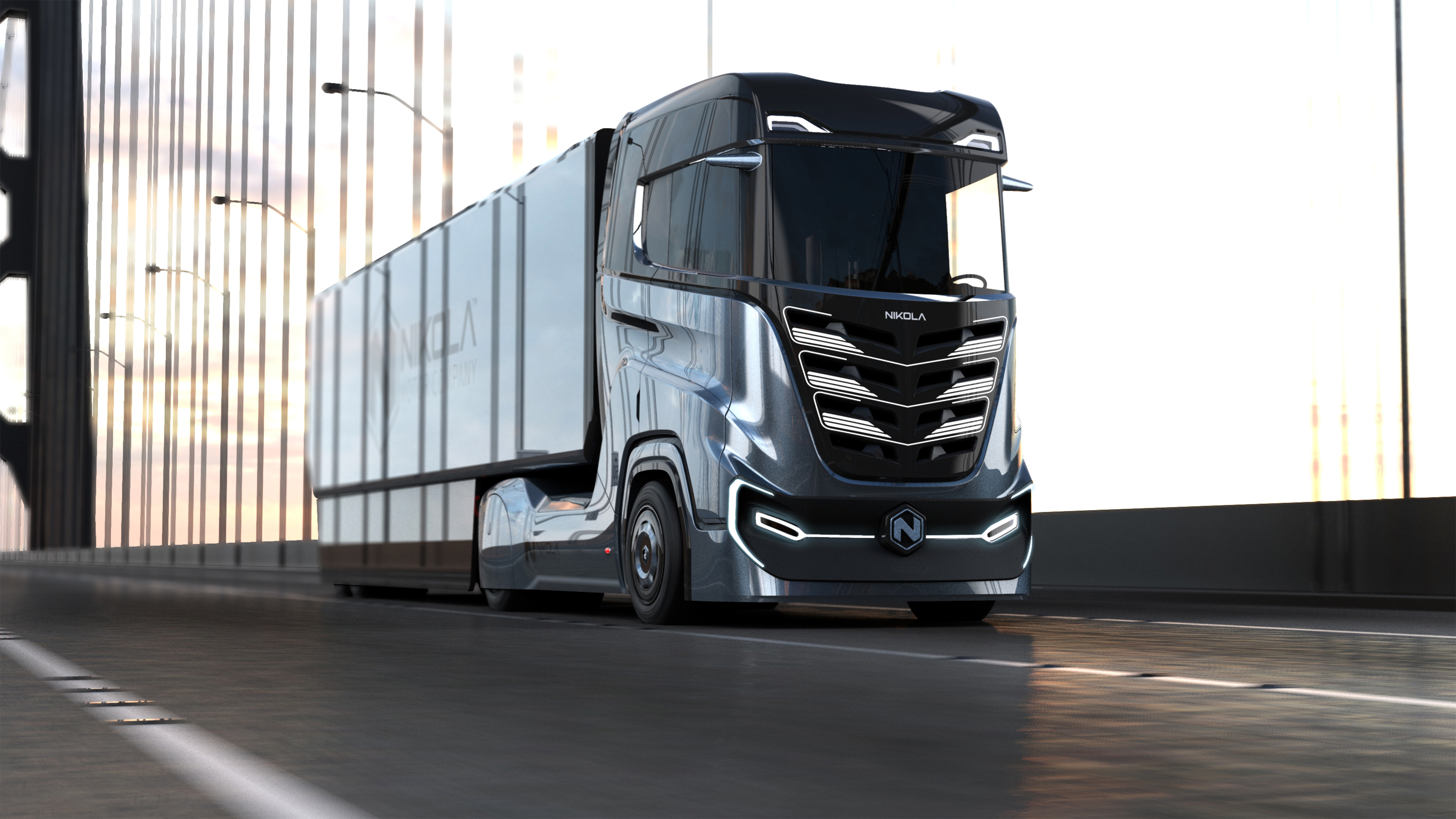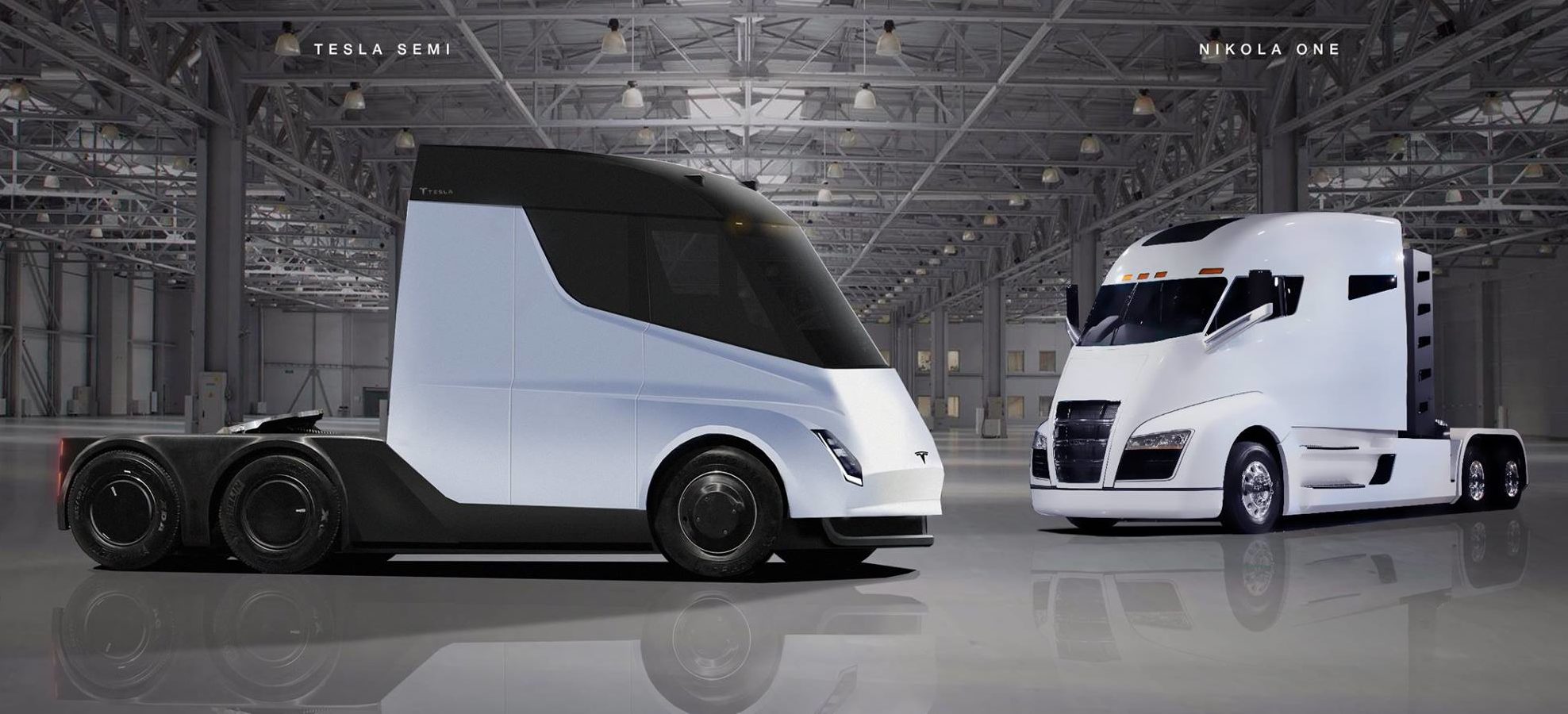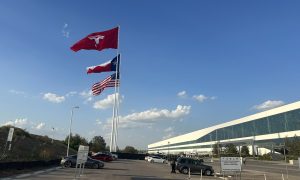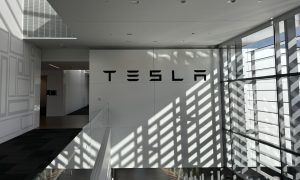

News
Tesla Semi rival Nikola unveils third truck amid release of 11.5k deposit refunds
Pushing forward with the development of its hydrogen-electric trucks, Tesla Semi rival Nikola Motors has announced that all 11,550 deposits placed for its vehicles have already been refunded. The company’s completion of its refunds comes amidst the release of the startup’s newest truck, the Nikola Tre, which is designed to compete in the EU market.
In trademark Nikola fashion, the company seemingly threw another shade at rival Tesla, stating that it does not operate on customer’s money. The trucking startup further noted that a company could not be “environmentally sustainable without being financially sustainable.” In a later statement on Twitter, Nikola noted that it opted to refund all the deposits placed on its vehicles because it did not want customers “thinking we were using their money to operate our business.”
All 11,500 truck deposits have now been refunded (except a few non responsive). We don't operate on customer's money. You cannot be environmentally sustainable without being financially sustainable.
— Nikola Corporation (@nikolamotor) November 5, 2018
The completion of Nikola’s refunds for its electric trucks comes as the startup unveiled its latest vehicle to date. Last Monday, the company opened reservations (at zero cost) for a hydrogen-electric truck that’s specifically designed for European markets. Dubbed as the Nikola Tre, the vehicle boasts 500 to 1,000 HP, 6×4 or 6×2 configurations and a range of 500 to 1,200 kilometers depending on options. The truck, which arguably looks the most conventional among Nikola’s offerings, is also created to fit within the current size and length restrictions for the European region.
Just like the Nikola One sleeper and the Nikola Two daycab, the Nikola Tre is armed to the teeth with technology. The company noted that the vehicle, apart from having range rivaling or exceeding even those of diesel-powered semi-trucks, would have fully autonomous features. In a press release, Nikola Motor Company Founder and CEO Trevor Milton noted that the Tre is expected to begin production for the vehicle sometime in 2022-2023.
“This truck is a real stunner and long overdue for Europe. It will be the first European zero-emission commercial truck to be delivered with redundant braking, redundant steering, redundant 800Vdc batteries, and a redundant 120 kW hydrogen fuel cell, all necessary for true level 5 autonomy. Expect our production to begin around the same time as our USA version in 2022-2023,” Milton stated.

Short-term goals for the Nikola Tre are already underway. European testing for the vehicle is expected to begin in Norway around 2020. The company is reportedly in the preliminary planning stages to identify an ideal location for its European manufacturing facility as well. A prototype display of the Nikola Tre, together with a working unit of the Nikola Two, is also expected to go on display in the company’s upcoming Nikola World exhibition on April 16-17, 2019. An example of a hydrogen fueling station for the company’s vehicles will be shown at the event too.
As Nikola starts moving forward with the development of its hydrogen-electric trucks, electric car maker Tesla continues to conduct real-world tests of its all-electric long-hauler, the Semi. Since its unveiling back in October 2017, the Tesla Semi has been sighted several times across multiple states in the US doing road tests. In a recent sighting, the Tesla Semi was seen charging at the Madonna Inn station using the company’s existing network of Superchargers. A brief glimpse of Tesla’s temporary “Megacharger” setup for the Semi was even spotted in a photograph.
Tesla plans to start producing the Semi sometime in 2019. Nikola, for its part, has declared that by 2028, its fleet would be the “largest energy consumer” in the United States. While it remains to be seen if Nikola could support its trucks with a network of hydrogen fueling stations, the arrival of its vehicles, as well as offerings from established electric car maker Tesla, could make the long-haul market far more competitive in the years to come.
News
Tesla begins Robotaxi certification push in Arizona: report
Tesla seems serious about expanding its Robotaxi service to several states in the coming months.

Tesla has initiated discussions with Arizona transportation regulators to certify its driverless Robotaxi service in the state, as per a recent report from Bloomberg News. The move follows Tesla’s launch of its Robotaxi pilot program in Austin, Texas, as well as CEO Elon Musk’s recent comments about the service’s expansion in the Bay Area.
The Arizona Department of Transportation confirmed to Bloomberg that Tesla has reached out to begin the certification process for autonomous ride-sharing operations in the state. While details remain limited, the outreach suggests that Tesla is serious about expanding its driverless Robotaxi service to several territories in the coming months.
The Arizona development comes as Tesla prepares to expand its service area in Austin this weekend, as per CEO Elon Musk in a post on X. Musk also stated that Tesla is targeting the San Francisco Bay Area as its next major market, with a potential launch “in a month or two,” pending regulatory approvals.
Tesla first launched its autonomous ride-hailing program on June 22 in Austin with a small fleet of Model Y vehicles, accompanied by a Tesla employee in the passenger seat to monitor safety. While still classified as a test, Musk has said the program will expand to about 1,000 vehicles in the coming months. Tesla will later upgrade its Robotaxi fleet with the Cyercab, a two-seater that is designed without a steering wheel.
Sightings of Cybercab castings around the Giga Texas complex suggests that Tesla may be ramping the initial trial production of the self-driving two-seater. Tesla, for its part, has noted in the past that volume production of the Cybercab is expected to start sometime next year.
In California, Tesla has already applied for a transportation charter-party carrier permit from the state’s Public Utilities Commission. The company is reportedly taking a phased approach to operating in California, with the Robotaxi service starting with pre-arranged rides for employees in vehicles with safety drivers.
News
Tesla sets November 6 date for 2025 Annual Shareholder Meeting
The automaker announced the date on Thursday in a Form 8-K.

Tesla has scheduled its 2025 annual shareholder meeting for November 6, addressing investor concerns that the company was nearing a legal deadline to hold the event.
The automaker announced the date on Thursday in a Form 8-K submitted to the United States Securities and Exchange Commission (SEC). The company also listed a new proposal submission deadline of July 31 for items to be included in the proxy statement.
Tesla’s announcement followed calls from a group of 27 shareholders, including the leaders of large public pension funds, which urged Tesla’s board to formally set the meeting date, as noted in a report from The Wall Street Journal.
The group noted that under Texas law, where Tesla is now incorporated, companies must hold annual meetings within 13 months of the last one if requested by shareholders. Tesla’s previous annual shareholder meeting was held on June 13, 2024, which placed the July 13 deadline in focus.
Tesla originally stated in its 2024 annual report that it would file its proxy statement by the end of April. However, an amended filing on April 30 indicated that the Board of Directors had not yet finalized a meeting date, at least at the time.
The April filing also confirmed that Tesla’s board had formed a special committee to evaluate certain matters related to CEO Elon Musk’s compensation plan. Musk’s CEO performance award remains at the center of a lengthy legal dispute in Delaware, Tesla’s former state of incorporation.
Due to the aftermath of Musk’s legal dispute about his compensation plan in Delaware, he has not been paid for his work at Tesla for several years. Musk, for his part, has noted that he is more concerned about his voting stake in Tesla than his actual salary.
At last year’s annual meeting, TSLA shareholders voted to reapprove Elon Musk’s compensation plan and ratified Tesla’s decision to relocate its legal domicile from Delaware to Texas.
Elon Musk
Grok coming to Tesla vehicles next week “at the latest:” Elon Musk
Grok’s rollout to Tesla vehicles is expected to begin next week at the latest.

Elon Musk announced on Thursday that Grok, the large language model developed by his startup xAI, will soon be available in Tesla vehicles. Grok’s rollout to Tesla vehicles is expected to begin next week at the latest, further deepening the ties between the two Elon Musk-led companies.
Tesla–xAI synergy
Musk confirmed the news on X shortly after livestreaming the release of Grok 4, xAI’s latest large language model. “Grok is coming to Tesla vehicles very soon. Next week at the latest,” Musk wrote in a post on social media platform X.
During the livestream, Musk and several members of the xAI team highlighted several upgrades to Grok 4’s voice capabilities and performance metrics, positioning the LLM as competitive with top-tier models from OpenAI and Google.
The in-vehicle integration of Grok marks a new chapter in Tesla’s AI development. While Tesla has long relied on in-house systems for autonomous driving and energy optimization, Grok’s integration would introduce conversational AI directly into its vehicles’ user experience. This integration could potentially improve customer interaction inside Tesla vehicles.
xAI and Tesla’s collaborative footprint
Grok’s upcoming rollout to Tesla vehicles adds to a growing business relationship between Tesla and xAI. Earlier this year, Tesla disclosed that it generated $198.3 million in revenue from commercial, consulting, and support agreements with xAI, as noted in a report from Bloomberg News. A large portion of that amount, however, came from the sale of Megapack energy storage systems to the artificial intelligence startup.
In July 2023, Musk polled X users about whether Tesla should invest $5 billion in xAI. While no formal investment has been made so far, 68% of poll participants voted yes, and Musk has since stated that the idea would be discussed with Tesla’s board.
-

 Elon Musk1 week ago
Elon Musk1 week agoTesla investors will be shocked by Jim Cramer’s latest assessment
-

 Elon Musk3 days ago
Elon Musk3 days agoElon Musk confirms Grok 4 launch on July 9 with livestream event
-

 Elon Musk16 hours ago
Elon Musk16 hours agoxAI launches Grok 4 with new $300/month SuperGrok Heavy subscription
-

 News7 days ago
News7 days agoTesla Model 3 ranks as the safest new car in Europe for 2025, per Euro NCAP tests
-

 Elon Musk2 weeks ago
Elon Musk2 weeks agoA Tesla just delivered itself to a customer autonomously, Elon Musk confirms
-

 Elon Musk1 week ago
Elon Musk1 week agoxAI’s Memphis data center receives air permit despite community criticism
-

 Elon Musk2 weeks ago
Elon Musk2 weeks agoTesla’s Omead Afshar, known as Elon Musk’s right-hand man, leaves company: reports
-

 News2 weeks ago
News2 weeks agoXiaomi CEO congratulates Tesla on first FSD delivery: “We have to continue learning!”
















